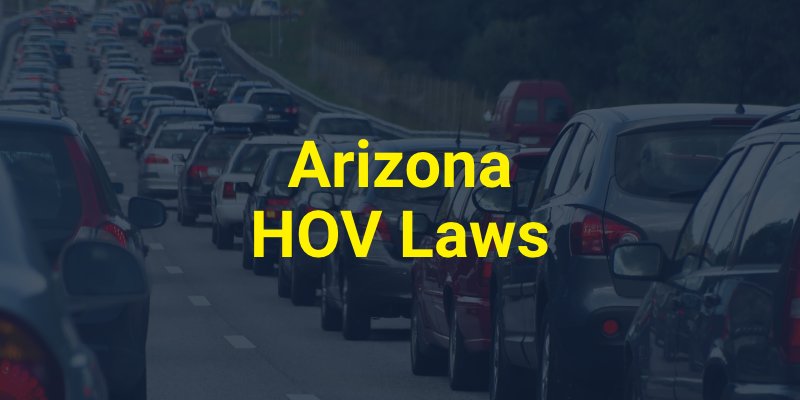Everyone wants to ease the burden of their daily commute. Driving on the 101, the 202, or the 51 during peak traffic times can almost double or triple the length of a drive. HOV lanes, which started appearing in Phoenix about 10 years ago, were designed to smooth the flow of traffic by promoting carpooling and thus reducing the number of vehicles on the road. Ideally, fewer cars on the road will also lead to fewer car accidents in Arizona.
You may be wondering, what are the specific rules regarding HOV lanes? When can I drive in them, and when can’t I? How can I speed up my daily commute while making sure I never violate HOV laws or get a ticket? Our Mesa car accident lawyers explain below:

On Arizona highways, the HOV lane will almost always be the leftmost lane of traffic. It will be marked periodically by a white diamond painted on the asphalt.
A standard vehicle may only use the HOV lane if they have two or more people in it. This includes the driver. If you are driving solo, stay out! If you have a friend with you, come on in.
Not all types of vehicles have access to the HOV lanes when the restrictions are in place. These lanes are designed primarily to alleviate traffic during peak commute hours, and these HOV lanes are reserved for passenger vehicles with at least two occupants – therefore qualifying them as “high occupancy.”
Certain other vehicle types may also use HOV lanes: buses and motorcycles qualify based on their ability to efficiently utilize space and move more people through congested areas and because they reduce congestion.
EMTs can use these express lanes in times of emergency where rapid response is crucial.
Also included in the list of those with HOV access are drivers with Arizona’s “Clean Air – Blue Skies” license plates designated for alternative fuel vehicles (AFVs), including fully electric or certain hybrid cars that meet specified emissions standards. These specialty plates allow environmentally friendly cars access as part of the state’s initiative to encourage reduced emissions and pollution.
In Arizona, restrictions related to towing a trailer in the HOV lane during peak hours are for safety and traffic flow purposes. While tow trucks performing their duties may use the HOV lane regardless of occupancy, recreational vehicles like motorhomes are permitted in these lanes only if two or more individuals occupy the vehicle during rush hour times.
As for other types of trailers or towing situations, it’s generally permitted to pull a trailer in the HOV lane. However, this needs careful consideration as trailers can affect traffic flow.
The fundamental objective of HOV lanes is to support more efficient transit and reduce congestion by encouraging ridesharing. Pulling a trailer can potentially slow movement and create safety concerns due to these vehicles’ increased braking distance and maneuverability difficulty.
The speed limit in the HOV lane is typically the same as it is in adjacent lanes. It’s important to adhere to posted speed limits and traffic regulations irrespective of which lane you’re using, ensuring safe travel for all road users.
There are restrictions on when non-qualifying vehicles can use the HOV lane. During weekday rush hours – specifically from 6 a.m. to 9 a.m. and then again from 3 p.m. to 7 p.m. – only vehicles with two or more occupants or other qualifying vehicles can use these lanes.
At all other times of the day, any vehicle is allowed to use the HOV lane as long as there is no other posted restriction.
Arizona distinguishes itself from some other states by not having high occupancy toll (HOT) lanes.
All HOV lanes in Arizona are free provided that you comply with regulations governing their use, like the required number of passengers during peak hours. This approach supports carpooling and more efficient travel without imposing additional costs on drivers who adhere to these rules.
If you are a single driver you may not enter the HOV lane for any reason, not even to pass. If you are caught in the HOV lane you may face a fine of up to $400.